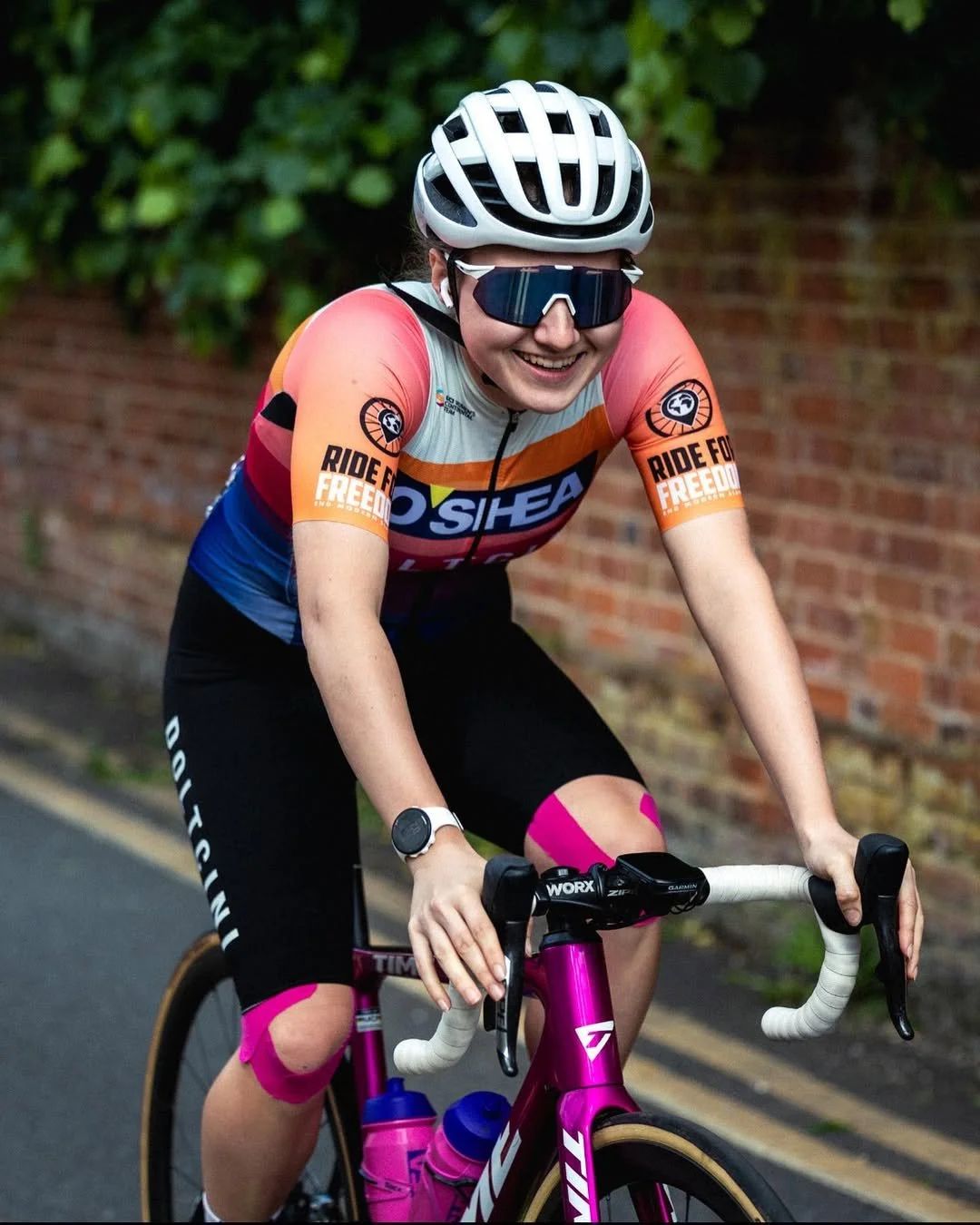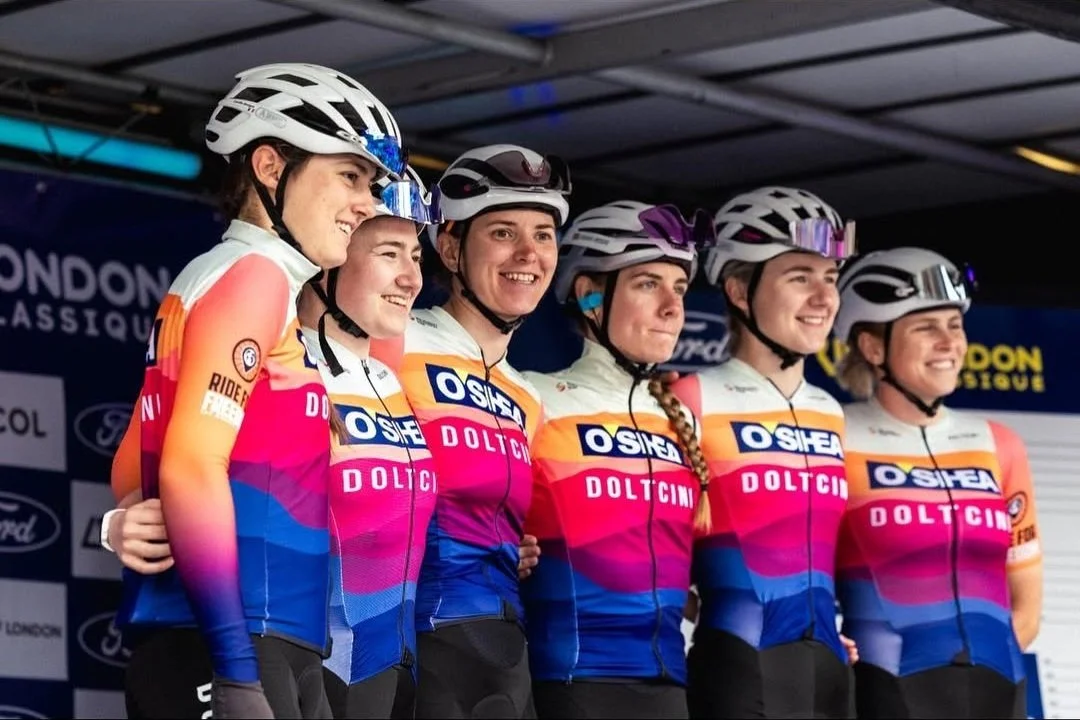Pedalling Through Barriers: Introducing Connie Hayes
Introduction
We’re excited to share the story of semi-professional cyclist Connie Hayes—a quiet powerhouse on the bike and a reflective force off it. Diagnosed with dyslexia and dyspraxia, and currently undergoing assessment for autism, Connie brings a level of self-awareness, depth, and emotional intelligence far beyond her 22 years. Only in our last blog post, we highlighted the lack of openly dyspraxic role models in sport—and now, here comes another one. This is a story of masking, meltdowns, resilience, and rediscovery—but most of all, it’s a story about what’s possible when a neurodivergent athlete is truly seen, supported, and believed in. Connie’s experiences shine a light on the hidden struggles many athletes face and offer hope for a more inclusive future in sport.
Childhood Masking and the Weight of ‘Being Good’
Connie Hayes is a semi-professional road and cyclocross cyclist who has competed at the prestigious Women’s Tour of Britain (UCI World Tour).
Yet, from a young age, Connie navigated a world that wasn’t built with her needs in mind. At school, she was labelled as “quirky” and “quiet”—but inside, she was exhausted, overwhelmed, and on the brink of emotional burnout. After long school days, she would come home and have meltdowns, the cost of keeping it all together.
Sport became one of her first coping mechanisms. She loved swimming, but struggled with coordination. She tried rowing, but her height (just 5'2") held her back. However, when she began cycling as part of rowing training, she discovered a perfect fit: a sport where strong legs, determination, and hyperfocus mattered more than technique or size.
Connie Hayes, Semi-Pro Cyclist
Sport as a Safe Haven (Sort Of)
Although sport gave Connie a release, her internal struggles remained. Perfectionism, bottled-up frustration, and a desire for explanation were ever-present. She was described by teachers as “a pleasure to teach”—a seemingly positive comment that, in retrospect, masked the hidden difficulties she was battling.
Connie and her parents now see this for what it was: polite euphemism hiding genuine struggle. Sugar-coating might protect short-term feelings, but it prolongs misunderstanding—and can cause real harm.
Connie Hayes, Semi-Pro Cyclist
Bottle, Bottle, Bang
In her final year of school, the pressure of exams became overwhelming. Connie “went off the rails”—a phrase that, while often used casually, reflects the very real meltdowns and breakdowns many undiagnosed neurodivergent individuals experience under stress. Despite her mother being a SENCO teacher, even she didn’t fully recognise the depth or nature of Connie’s internal struggles—proof that neurodivergence can be hard to spot, even close to home.
It wasn’t until one teacher, who had their own lived experience of neurodivergence, recognised the signs and bravely initiated a conversation that things began to change. That moment of insight led to Connie’s first diagnosis, setting her on a path toward self-understanding, acceptance, and the support she had long needed.
Diagnosis as Relief… and Recalibration
Being diagnosed was bittersweet. It moved her further from the ‘ideal’ she thought she was supposed to achieve—but it also gave her clarity, self-compassion, and permission to stop pretending.
It explained her struggle with technique in swimming, her challenges in cyclocross, and her late mastery of skills like removing a gilet mid-ride—skills considered ‘basic’ in elite cycling circles. These perceived gaps held her back from being recognised as a prospect in junior academies.
And yet—she went on to ride at the Women’s Tour.
Connie Hayes, Semi-Pro Cyclist
Rejection, Resilience, and Risk Aversion
Throughout her journey, Connie followed a pattern of:
Rejection → regroup. Failure → regroup. Meltdown → regroup.
But over time, these experiences took a toll. Connie admits she has become more risk averse, especially now that her behaviours, once seen as “quirky,” are framed as “childish” or “difficult.”
A particularly painful chapter came when she joined a Belgian pro-continental team. Attitudes toward neurodivergence were outdated, and language barriers amplified the alienation. It was a traumatic experience for a young athlete already navigating vulnerability.
Finding the Right Team – and Breathing Again
Connie is now riding for Awol O'Shae, a second-tier UCI team that has, by some mix of luck and leadership, created a neuroinclusive environment. She credits Directeur Sportif Brent Skinner as being “a legend” who cares for all his riders—especially those with extra challenges.
The result? She thrives.
She still has mini meltdowns—but her team understands her. They don’t judge her communication or emotional expression. They know her heart is in the right place, and they’ve learned how to meet her halfway.
Final Thoughts
Connie Hayes is quietly rewriting the rules—not just for what a cyclist can be, but for what a supported neurodivergent athlete can achieve. Her story challenges us to look past performance alone and see the emotional labour, the resilience, and the constant regrouping that so often go unseen.
Only last blog, we spoke about the lack of dyspraxic role models in sport—and here’s another, showing up not with bravado, but with courage, depth, and fierce determination. Connie is proof that with the right environment, neurodivergent athletes don’t just survive—they flourish.
We’re grateful to Connie for her honesty, her strength, and her presence in this space. Her voice, like her riding, is steady, powerful, and going places.
Follow Connie on Instagram @connie_hayes.
Key Takeaways for Neurodivergent Individuals
Your differences are not deficits
→ Embrace the qualities that make you unique—those traits may be your greatest strengths in the right environment.
Set boundaries, not limits
→ Choosing to leave an unhealthy space isn’t failure—it’s strength, and sometimes survival.
Meltdowns are neurological, not behavioural
→ They’re system overloads, not tantrums—learn to recognise them without shame or judgment.
Key Takeaways for Peers, Supporters, and Parents
Be curious, not critical
→ What may seem odd or over-emotional might be a protective mechanism or sign of distress.
Support the person, not just the performance
→ Knowing someone believes in you—even when you're struggling—can change everything.
Tune into subtle cues
→ Look beyond behaviour and ask: What’s really going on underneath?
Key Takeaways for Coaches, Leaders, and Organisations
Create choice, not pressure
→ Offer flexibility in how athletes communicate and participate—it shows trust and reduces anxiety.
Choose words carefully
→ Neurodivergent athletes often absorb language deeply—thoughtless comments can echo for a long time.
Address gendered masking
→ Female athletes may be judged unfairly for expressing needs—coaching must make room for emotional honesty.
This blog post was written by Caragh McMurtry. Subheadings were added by the Neurodiverse Sport team to support readability.



